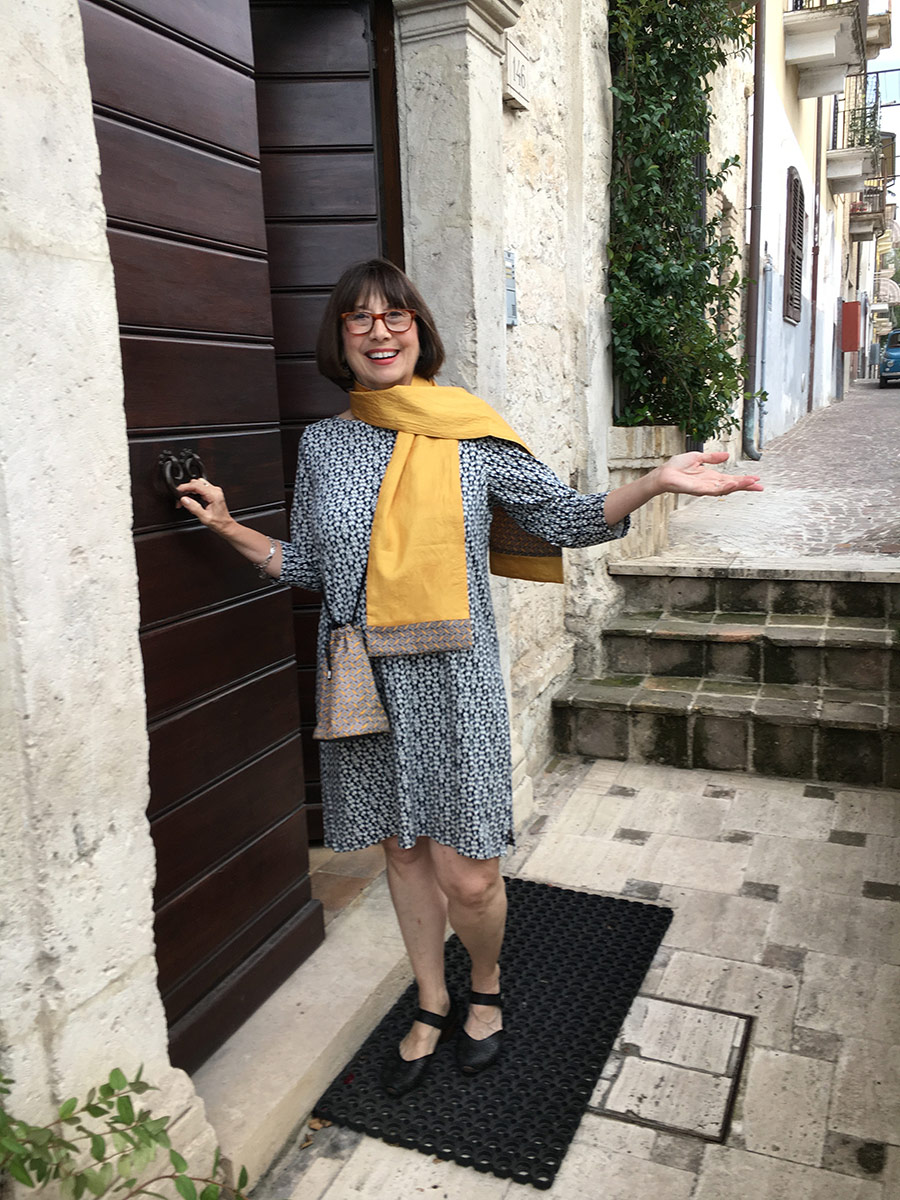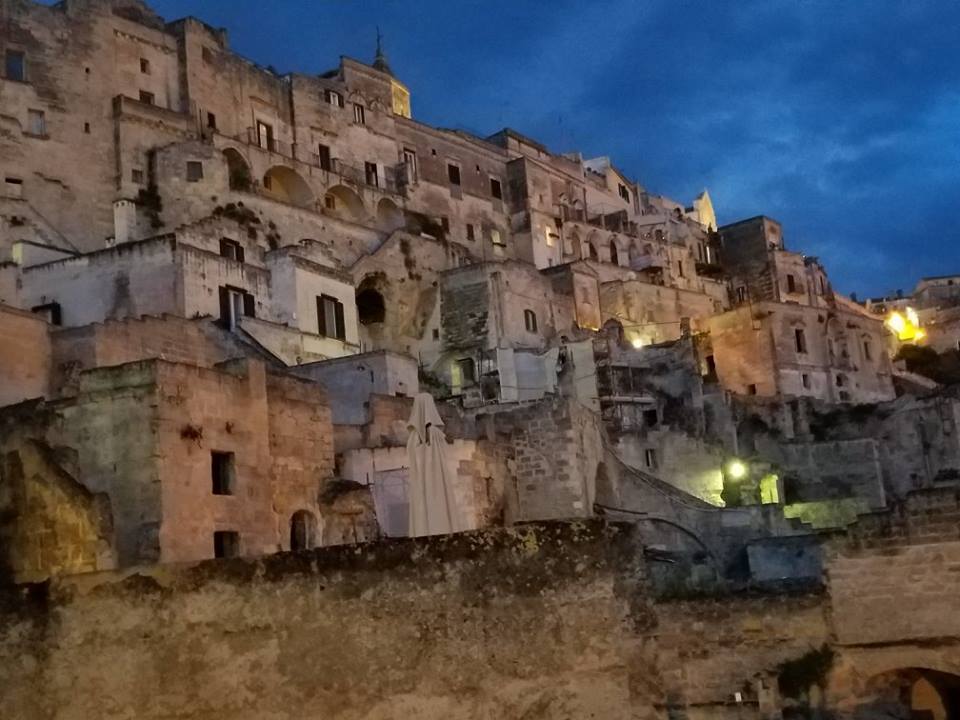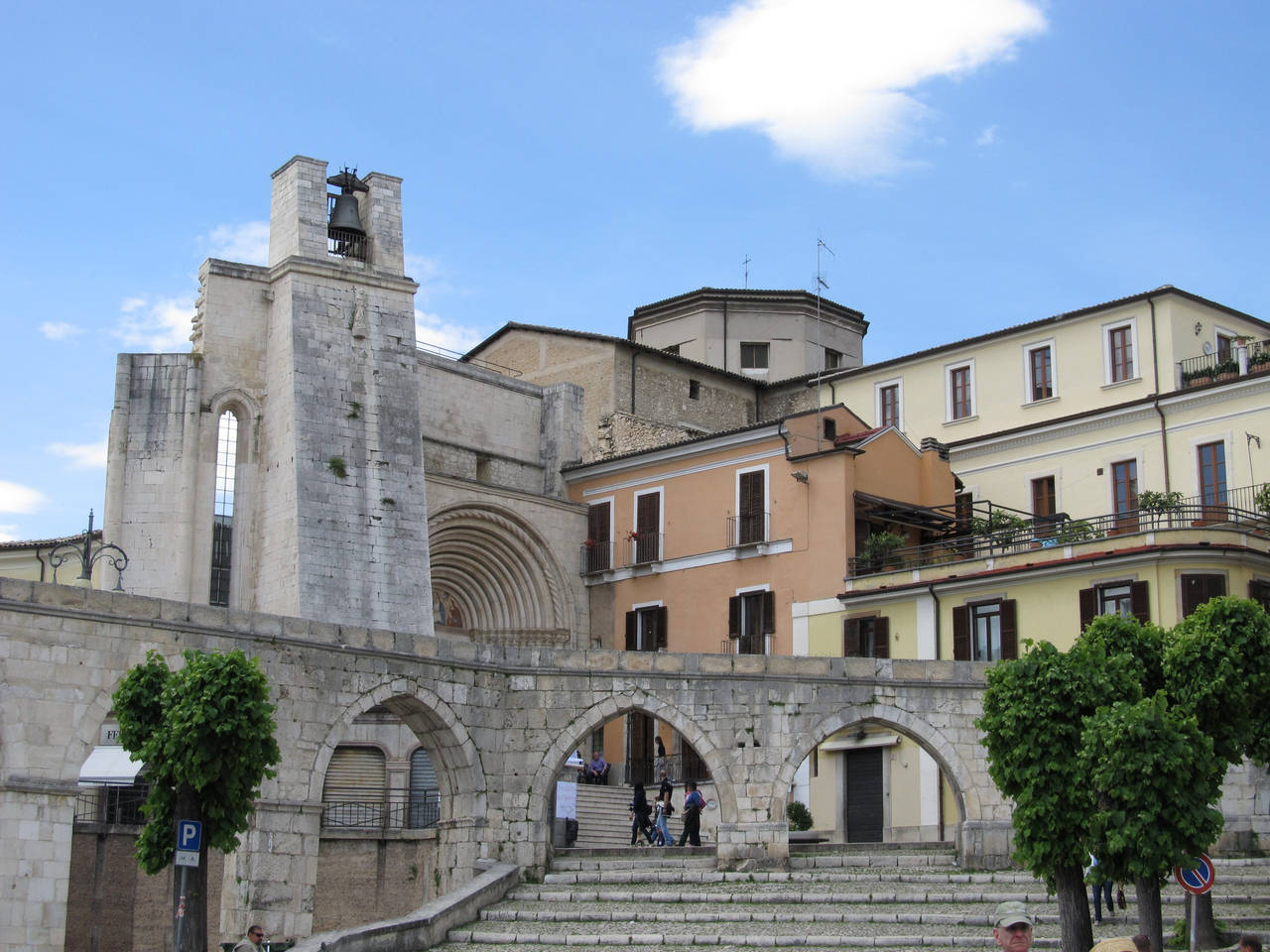My favorite thing is to go where I’ve never been. — Diane Arbus
We had just spent an amazing week in the north of Italy, introducing six of our friends to Bologna, Mantova, Modena, Padova, Ferrara, Vicenza . . . the list goes on. It was a whirlwind of a trip for a number of reasons, and at this point two couples had gone off to do some visiting due a due. The remaining four of us were packing the car for the next leg of our adventure: three days in Milano, about two and a half hours away.
When we were all settled in, maps in our laps and luggage and provisions in the trunk, the villa owner’s caretakers, Lilliana and Valter, came out to wish us farewell. When Lilliana inquired where we were going, and we told her Milan via Lake Garda, she grabbed for the map and pointed to a place that none of us had ever heard of before. She said (in Italian, of course) that if were were heading towards Lago di Garda (Lake Garda) that we should stop at this little place first. That it was woodsy and pretty and would be a good stopping off place for lunch. Always up for an adventure, we thanked her and said we’d give it a try. We had no idea what to expect, and couldn’t find any mention of it in our guidebooks.

Our first look
About an hour later, we took the turns that were indicated for a place called Borghetto di Valeggio sul Mincio. We climbed up and up through greenery and gardens, then found ourselves in a region of small inns and parks. When the road leveled out, we were stunned, finding ourselves on a road over a river and a big stone structure dead ahead. We stopped the car and pulled over. Looking down the river bank, we saw a small but bustling scene. Looked like a little restaurant. Maybe a church. A bridge. It was too far away to see anything clearly from where we were, so we decided to drive on a bit to find the way in. We turned right not too far down the road and found a crude parking lot with about 20 other cars in it, paid the fee at the machine, put our sticker on the dashboard and walked in.
Borghetto di Valeggio sul Mincio is a survivor. Its history dates back to the Bronze Age, but it was majorly settled during the Lombard period of the 7th – 8th centuries. Borghetto (which means either “fortified settlement” or “”little town”) is a fairy tale-gorgeous medieval village on the banks of the Mincio River, which flows from Lake Garda. Along the riverbanks are a handful of simple but beautiful plastered homes with tile roofs, some of which have colorful boats tied up at their docks. The river scene is dominated by the Visconti Bridge (Ponte Visconteo), built in 1393 by Gian Galeazzo Visconti, the Duke of Milan. Originally intended to be a dam, a proposition violently opposed by the Mantovans, the bridge instead has seen centuries of strife between the various city-states of the North and was virtually impassable from the early 1600s — when it was damaged by the retreating Venetians — until the first years of the Twentieth Century, when iron was inserted into the stone structure for strength and holes were drilled in the two huge vaults to permit the river’s occasional overflow.
A smaller bridge, the Bridge of San Marco, guides foot traffic from the area around the village church — dated 1759 and

The Mill on the Mincio
rebuilt on an ancient Romanesque chapel — to the other side of the Mincio. And the Mincio itself is the star of the old medieval village, allowing for boat passage and the power for the mills used for centuries for rice and wheat cultivation. We saw huge swans and fish and ducks in the water, all seemingly swimming in place. When we looked more carefully, it was clear that these creatures were paddling madly against the strong current so they could keep their advantageous positions near the restaurants, whose patrons might succumb to their charms and throw them a bit of food. They always did.

Paddling against the current
If you’re looking for the most unique, picturesque place in all of Italy, this has got to be it. No fewer than five wedding parties passed through during our short visit to have their pictures taken on the bridge across the river. Then a bicycle race tore through the village, all colors and spandex and helmets. We thought it couldn’t get any better than this. And then we decided to have lunch.
We noticed a small cafe when we first came into town and one larger restaurant, but because we had walked all the way through and over the river, we wanted to stay put. But we were faced with another decision: to eat a light mid-day meal and go for broke in Milan or have our big meal in this Italian Neverland and go light when we got to Milan? We opted for the latter.

Antica Locanda
When we crossed the bridge we were caught up in a scene that none of us will ever forget. Under an arbor of linden and chestnut trees alongside the river were tables set up for a king: linens and crystal and silver, with crisp waiters standing guard to usher in new guests. On the one side of a path, this enchanting sylvan scene. On the other, the source of its bounty: Antica Locanda Mincio. Most likely constructed on the remains of a Templar tavern, the 500-year-old Antica Locanda Mincio is a rare jewel in a most unlikely setting. Recreated as a trattoria in 1919 by Angelo Bertaiola (who imported Mantova’s famed agnolotti ((tortellini)) to the Veronese), the restaurant is now run by Gabriele, Angelo’s grandson, with love and passion for the ancient traditions of the region.

A bit of heaven under the trees
We took a table alongside the river and the magic continued. We started with the inn’s famous Pilgrim’s Soup, a centuries-old recipe that begins with a meat stock and includes sliced chicken livers, morel mushrooms, black truffles and cinnamon. We also had the region’s beloved tortellini with zucca (pumpkin) and pasta with pear and ricotta, accompanied by a bottle of crisp Viongier. For dessert? A simple but elegant apple cake that was crusted with sugar and still light as a dream. Were we under a spell? Most definitely. And one that I would happily go under again.
We travelers can go to a place we’ve never been only once, and then we think we begin to know it. Since it’s just about 20 minutes outside of Verona — where I have friends and now, a double excuse to visit — I’m looking forward to going back to Borghetto di Valeggio sul Mincio and staying there for a while, getting to know it even better. And now that you know about it, I hope you will, too. If you go, be sure to explore the Locanda building. Walk through its mural-filled rooms and you’ll probably even be invited into the kitchen to watch the mastery. It will be an unforgettable experience.

Making the tortelli
Buon viaggio!

Linda Dini Jenkins is a card-carrying Italophile, travel planner, freelance writer, and amateur photographer. Travel is her passion, so writing about her travels just comes naturally. She hopes all her travelers find a way to express their joys, surprises, and fears as they travel and gives every traveler a nifty journal to help smooth the way. Learn more…


